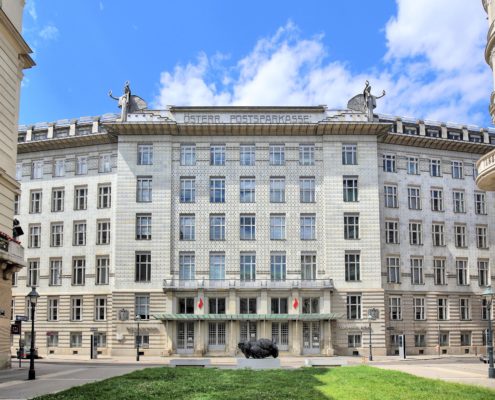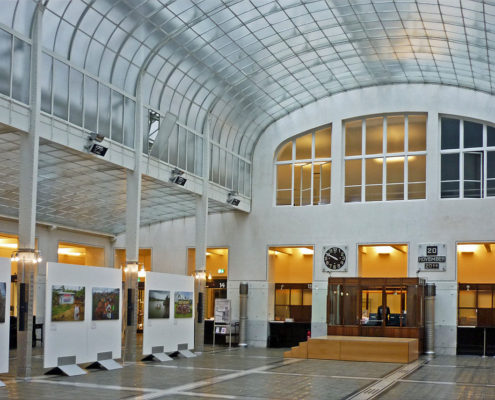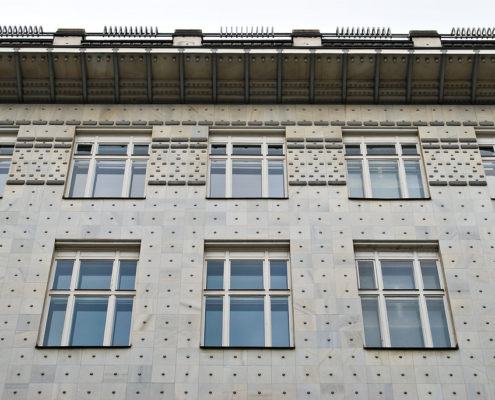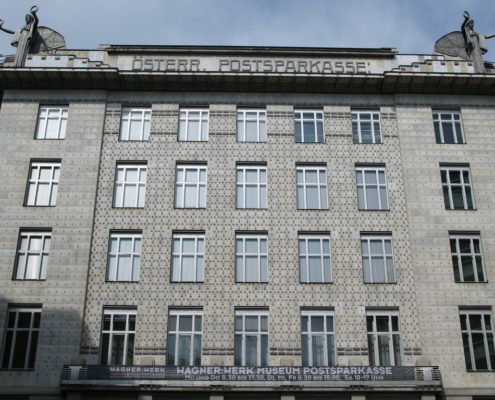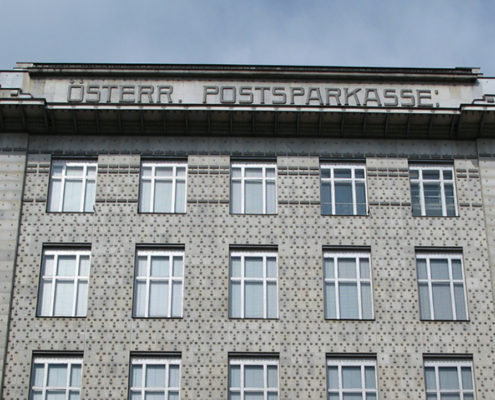Otto Wagner's Postal Savings Bank ranks among the key works of European Modernity and Viennese art around 1900. The building realized from 1904 to 1912 is Wagner's (1841-1918) most modern and important work. His rule that "what is impractical can never be beautiful" was the result of decades of architectural analyses and superior skills. The functionality of each constructive detail and interior decoration feature and the usability of each piece of furniture designed by Wagner guaranteed intelligent, convincing, and highly aesthetic solutions.
The facade's aluminum-covered metal bolts, for example, are both a technical requirement and a programmatic exhibition of Modernity, but also convey an important symbolic message: the iron-clad treasure chest stands as an archetype of safekeeping money.
Information provided in part by: www.ottowagner.com

